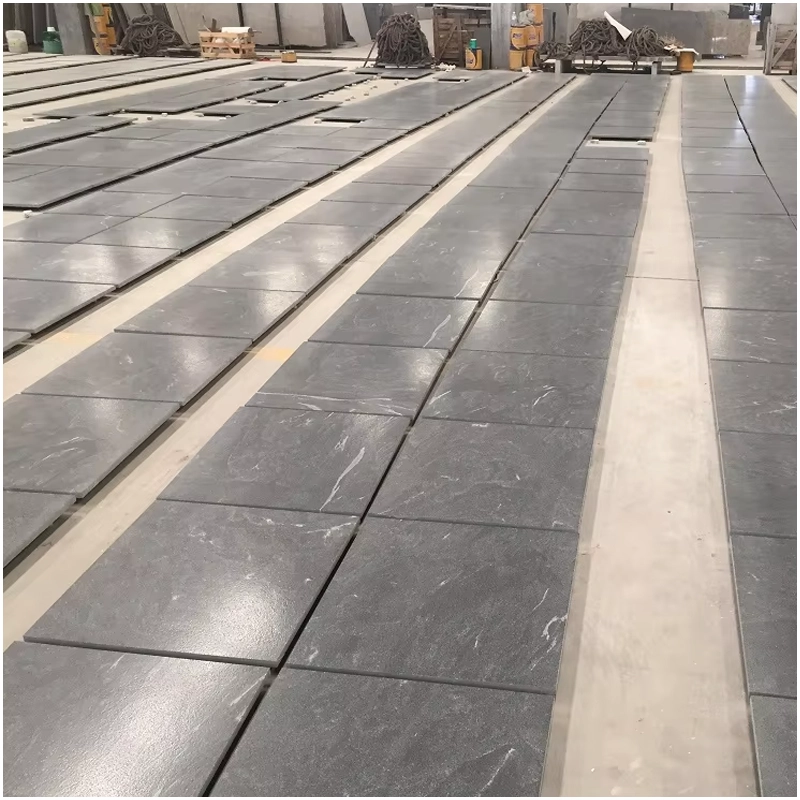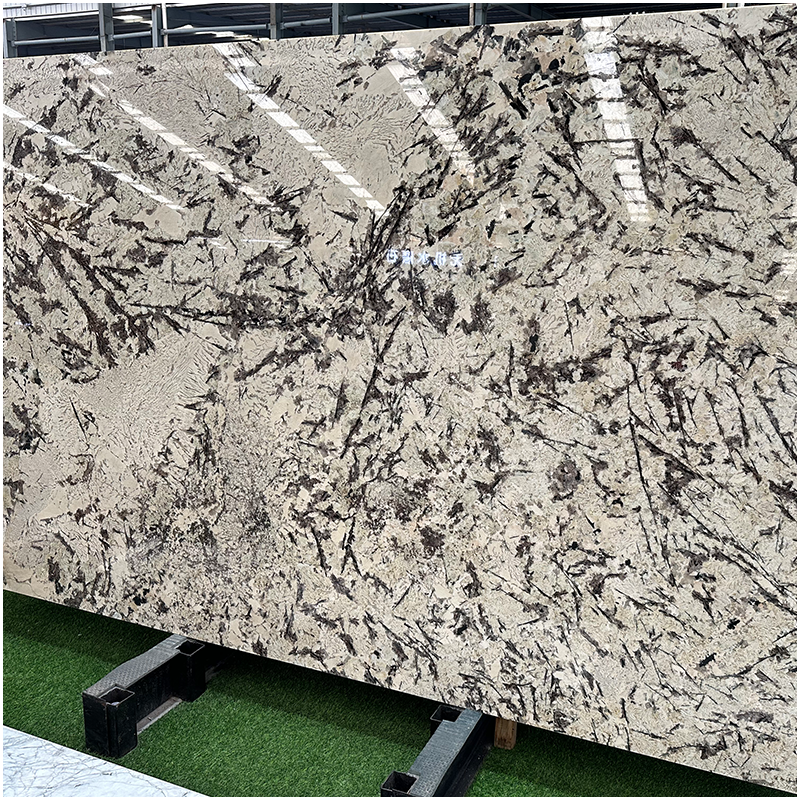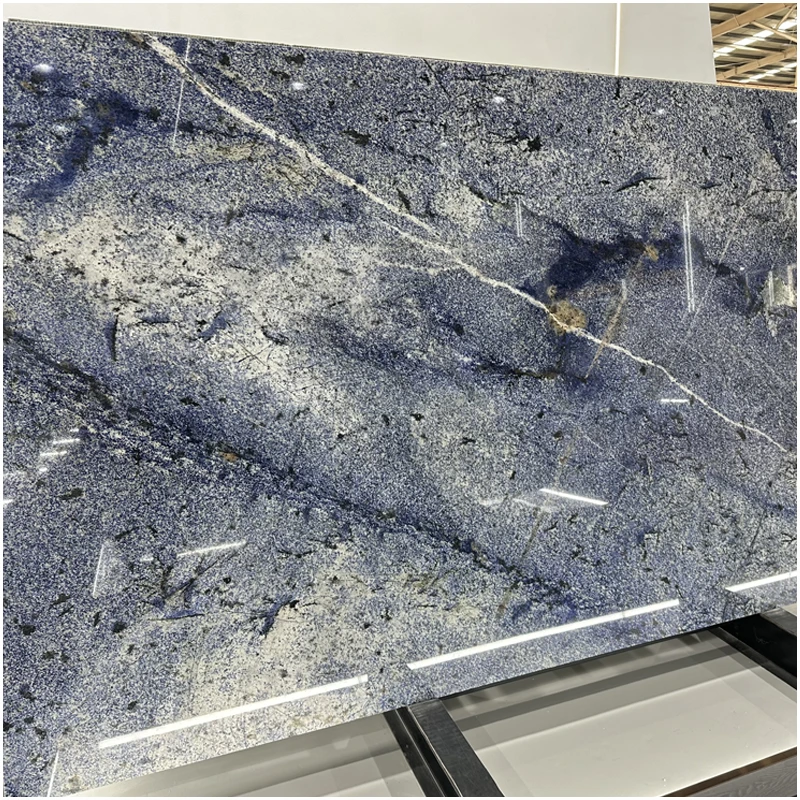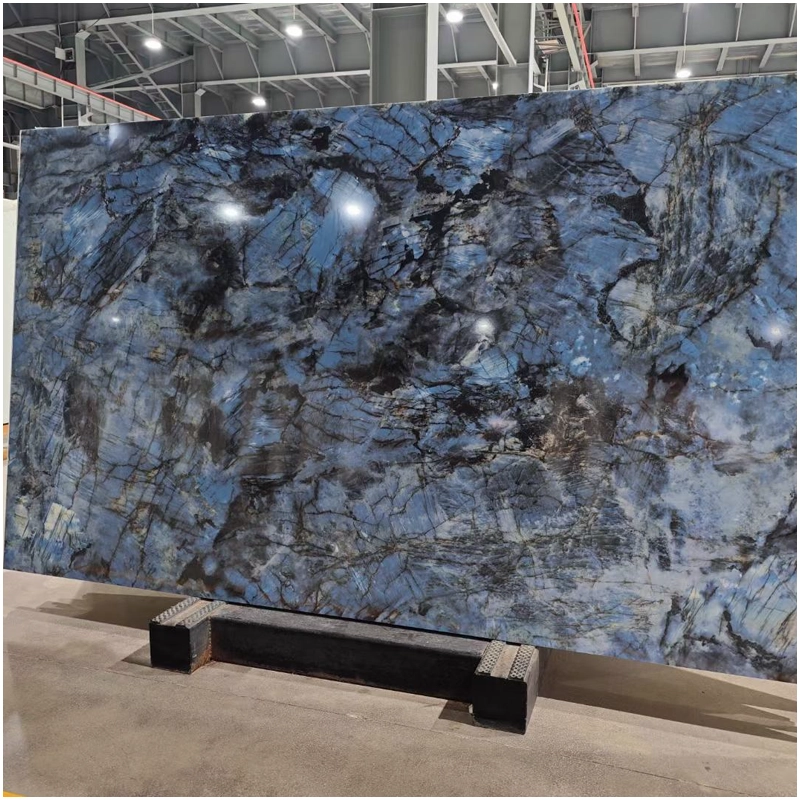From Oman’s seaside villas to Riyadh’s grand reception halls, architects are blending modern geometry with ancient stone opulence — and green marble is at the center of it all.Key Highlights:Green marble symbolizes nature, balance, and wealth — a color revered in Islamic art.
Middle Eastern projects now favor custom-cut slabs for floors, columns, and arches.
China’s green marble quarries supply most of the high-polish materials for GCC palaces.
Expert finishing and sustainability standards ensure long-term performance in desert climates.
1. The Royal Aesthetic: Why Green Marble Defines Middle Eastern Luxury
Green marble is more than a decorative stone — it’s an architectural statement of harmony and affluence.
In the Middle East, the color green holds deep symbolic power — representing paradise, renewal, and prosperity. That’s why designers in Saudi Arabia, Qatar, and the UAE have adopted แผ่นหินอ่อนสีเขียว for luxury interiors where heritage meets innovation.
Each slab carries a distinct mineral pattern, from forest green swirls to jade-like translucence. When installed under warm light or natural sunlight, the surface seems alive — shifting between emerald, silver, and onyx hues.
🏛 Architectural Insight:
“Clients in the Gulf want stones that communicate legacy and prestige. Green marble delivers that royal serenity modern white marbles cannot.”
- Ali Rahman, Chief Architect, Doha Design Studio.

2. Cultural Roots and Symbolism in Palatial Architecture
Across Islamic design history, สีเขียว was the color of paradise, used in domes, calligraphy, and textiles. Now, marble interprets that heritage in a tangible form.
In palaces from Kuwait to Abu Dhabi, the use of green marble on floors and colonnades reflects balance — a meeting of divine inspiration and architectural grandeur.
Designers pair สีเขียว แผ่นหินอ่อน with gilded brass trims, white plaster domes, and Persian mosaic ceilings. The result: interiors that merge nature’s calmness with royal opulence.
🌿 Material Harmony:
Polished finish — ideal for throne rooms and grand staircases.
Honed finish — perfect for corridors and large villa lobbies.
Waterjet patterns — used in mosque courtyards and dome interiors.
3. From Quarry to Palace: Crafting Excellence
Behind every luxurious installation lies precision craftsmanship. For U Stone sources green marble blocks from Chinese and Indian quarries, selecting those with balanced color and dense crystal structure.
Each block is processed through:
-
CNC bridge saw cutting for dimension accuracy.
-
Double-surface polishing up to 8000-grit clarity.
-
Resin filling and UV sealing to withstand temperature fluctuation.
-
SGS and CE testing to meet international project standards.
Exported slabs are packed in ISPM-15 certified crates, labeled with traceable batch codes — ensuring transparent documentation for global buyers.
4. Design Applications: From Villas to Royal Complexes
Green marble’s versatility allows it to appear across every spatial scale — from intricate wall panels to massive atrium floors.
แอปพลิเคชันยอดนิยม
Palace Entrances: Grand staircases and rotundas with Verde Guatemala or Forest Green slabs.
Private Villas: Bathroom walls and spa flooring with Emerald Green marble.
Mosques and Cultural Centers: Dome cladding and courtyard flooring in mixed-polish finishes.
Hotels and Embassies: Lobby pillars and feature walls paired with gold leaf detailing.
5. Sustainability and Standards in Export Production
Luxury doesn’t mean waste. Modern green marble production prioritizes responsible sourcing and circular reuse of stone byproducts.
For U Stone partners with quarries following ISO 14001 environmental management และ water-recycling systems that minimize waste by up to 80%.
Every exported slab is SGS-tested for:
ความแข็งแรงในการบีบอัด above 140 MPa
Low porosity (≤0.25%)
Zero harmful radiation levels (EN 12620 compliance)
These certifications make แผ่นหินอ่อนสีเขียว fully compliant with European CE standards — essential for projects in the UAE, Saudi Arabia, and Egypt that collaborate with EU contractors.
Veria Green Marble – Known for its emerald tone and delicate white veining, ideal for villa floors and reception walls. Polished slabs reflect light beautifully under chandeliers and domes.
Emerald Green & Irish Green Marble – These deeper green marbles create dramatic focal points for palace corridors and spa suites. Their contrast veins bring depth and elegance to large-format installations.
Verde Alpi / Prato Green Marble – Featuring bold, dynamic veining patterns, this type is perfect for accent columns, royal entrances, and grand staircases.
Forest Green Marble (India) – A forest-inspired aesthetic with natural linear veins, often chosen for waterjet flooring and mosque courtyards.
Common Finishes Used in Palatial Interiors
Polished Finish: Delivers a mirror-like luxury surface, enhancing color saturation and the perception of space — essential for ballrooms and lobbies.
Honed Finish: Offers soft texture and light diffusion, ideal for private villas, corridors, and serene interiors.
Leather or Antique Finish: Adds tactile character to furniture tops and decorative panels, suitable for classic-style villas and spa areas.
Design Considerations When Selecting Green Marble
Project Scale & Lighting: Deep emeralds thrive under golden or natural daylight; lighter greens work better in compact or shaded areas.
Durability & Maintenance: Green marble requires periodic sealing and neutral-pH cleaning, ensuring shine and longevity.
Cultural Preference: In Middle Eastern design, green marble symbolizes harmony and paradise, making it favored for both religious and residential architecture.
Source Reliability: Opt for CE- and SGS-certified suppliers to guarantee export compliance and consistent slab quality.
6. Expert Insights and Design Perspectives
“Green marble sits at the intersection of culture and comfort,” says Dr. Sara Al-Nouri, Professor of Islamic Design at Beirut Institute of Architecture.
“Its symbolism of life and eternity makes it especially beloved for sacred and residential architecture alike.”
Meanwhile, international importers praise China’s craftsmanship and consistency.
“Chinese factories understand the precision the Middle East market demands — their slabs arrive ready for installation, perfectly polished,”
notes Omar Hafez, Senior Buyer, Riyadh Royal Projects Division.

FAQ: Green Marble Slabs for Palatial Design
-
Why is green หินอ่อน popular in Middle Eastern design?
It symbolizes paradise, renewal, and luxury, aligning with Islamic cultural aesthetics. -
Which types of green marble are most used for villas and palaces?
Indian Green, Verde Alpi, and Forest Green are favorites for their deep tone and high polish. -
Can green marble withstand Middle Eastern heat?
Yes — UV-sealed and resin-treated slabs resist high temperature and humidity changes. -
Is Chinese green marble suitable for high-end projects?
Absolutely. Modern factories meet CE and SGS standards, making them reliable for luxury applications. -
What maintenance is required for green marble floors?
Clean with neutral-pH solutions and reseal every 12–18 months to retain luster and prevent etching.
อ้างอิง
-
SGS Group – Stone Testing & CE Certification Guide, 2024 Edition.
-
Italian Natural Stone Institute – Material Symbolism in Middle Eastern Architecture.
-
UAE Ministry of Culture – Contemporary Islamic Design and Stone Craftsmanship.
-
CE Standard EN 1469 – Natural Stone Products for Cladding Applications.
-
ISO 14001 – Environmental Management for Quarry Operations.
-
Qatar Design Council – 2025 Villa Design Forecast.
-
Beijing Marble Research Institute – Thermal Resistance of Polished Marble Slabs.
-
Saudi Royal Projects Bureau – Green Stone Application in Palace Architecture.
-
European Stone Federation – Sustainable Marble Supply Chains.
-
Beirut Institute of Architecture – Symbolic Color in Islamic Building Design.
In the evolving landscape of Middle Eastern architecture, Green Marble Slabs symbolize a bridge between heritage and innovation. Their natural depth, radiant hue, and refined craftsmanship make them the preferred choice for designers shaping royal villas and palatial estates.According to Dr. Nasser Al-Habib, senior architect at Dubai Design Forum, “Green marble mirrors the spiritual tranquility of the desert oasis — timeless, restorative, and regal.”
This fusion of culture and craftsmanship reflects how Chinese marble manufacturers are mastering both aesthetics and sustainability, delivering slabs that meet CE and SGS certifications. Each piece of green marble carries not only the glow of natural artistry but also the promise of enduring architectural legacy across the Arabian skyline.











